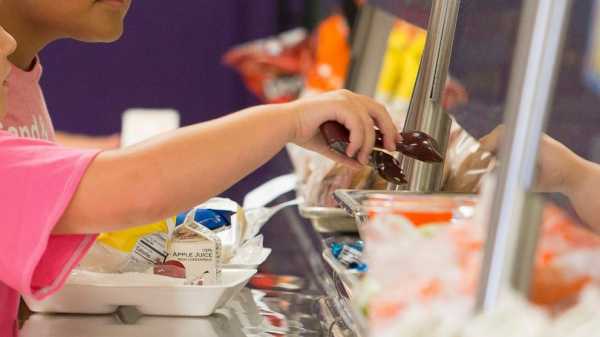
Nearly a million children could lose their automatic eligibility for free school lunches under a Trump administration proposal that would reduce the number of people who get food stamps.
Interested in Trump Administration?
Add Trump Administration as an interest to stay up to date on the latest Trump Administration news, video, and analysis from ABC News.
Trump Administration
Add Interest
The U.S. Department of Agriculture has released an analysis that says as many as 982,000 children could be affected by the change. About half would have to pay a reduced price of 40 cents for school lunch and 30 cents for breakfast. Around 40,000 would need to pay the full price, which varies depending on the district.
The rest — 445,000 — would remain eligible for free meals, but their families would have to apply to qualify.
Children automatically qualify for free lunches if their families receive food stamps, but the Trump administration has proposed tightening eligibility for the Supplemental Nutrition Assistance Program, or SNAP, which was once known as food stamps. The USDA is not proposing changes to the income rules for the program. It says it is addressing a loophole that gives eligibility to people who would not have otherwise qualified.
The agency said the vast majority of affected children would still be eligible for either free or reduced-price meals.
But Lisa Davis of the advocacy group No Kid Hungry said the application to qualify could be a barrier.
“We hear from schools all the time about the challenge they have with getting families to understand the paperwork or to get it back,” Davis said.
The National School Lunch Program serves roughly 30 million students, including about 20 million free meals daily. For those who don’t qualify for free or reduced price meals, the average price of lunch was $2.48 for elementary school students in the 2016-17 school year, according to the School Nutrition Association, which represents cafeteria employees and vendors.
The group says about three-quarters of school districts have students with unpaid meal charges.
The prevalence of school lunch debt shows even small amounts of money can add up over time and become a burden to struggling families, said Giridhar Mallya, senior policy officer at the Robert Wood Johnson Foundation.
Earlier this year, a Rhode Island district at the center of a controversy around “lunch shaming ” — singling out students who owe lunch money — said $12,000 of its $77,000 in unpaid meal charges were owed by children who qualified for free lunches. The district said the charges were incurred before the families’ applications were approved.
In details released late Monday, the USDA said its proposal could cut $90 million a year from the cost of its school lunch and breakfast programs, which last year was more than $18 billion. It noted the actual number of children who could lose automatic access to free lunch could be less, since some schools offer free lunches to all students regardless of their eligibility.
But those schools do so under a program that requires 40% of students to be eligible for free meals, and the rule change could mean some schools no longer meet that threshold, Mallya said.
The USDA released the details of its analysis after it was criticized for failing to report the impact its SNAP rule change could have on children’s access to free school meals. The agency has said the change is intended to make eligibility rules more consistent across the country, since states can grant people eligibility if they were enrolled in other assistance programs.
The USDA said it would reopen the public comment period on the rule for two weeks to allow feedback on the estimated impact to school meals.
———
The Associated Press Health and Science Department receives support from the Howard Hughes Medical Institute’s Department of Science Education. The AP is solely responsible for all content.
Sourse: abcnews.go.com






